Las jardineras, que suelen pasarse por alto en el paisajismo tradicional, ofrecen una forma versátil y dinámica de realzar los espacios al aire libre. Estos recipientes pueden añadir un toque de color, textura y estructura a cualquier jardín, patio o balcón. Si coloca las jardineras estratégicamente, podrá crear exhibiciones visuales impresionantes, optimizar el espacio e incluso cultivar jardines comestibles.
En este artículo, exploraremos los beneficios del paisajismo con jardineras, lo guiaremos a través del proceso de elección de los contenedores adecuados y le brindaremos ideas creativas para incorporarlos a su diseño exterior.
Beneficios del paisajismo con jardineras
Las jardineras de exterior ofrecen una forma flexible y adaptable de mejorar su jardín o patio. Estos recipientes ofrecen numerosos beneficios, entre ellos:
- Versatilidad y movilidad: las jardineras ofrecen una flexibilidad inigualable en el diseño paisajístico. Se pueden mover fácilmente para adaptarse a los cambios estacionales, a las preferencias de diseño cambiantes o a los nuevos requisitos de las plantas. Esta movilidad permite la experimentación y personalización frecuentes de los espacios al aire libre.
- Flexibilidad estacional: las jardineras son una forma práctica de exhibir las flores y el follaje de la temporada. Al rotar las plantas a lo largo del año, puede mantener un jardín vibrante y en constante cambio. Por ejemplo, en primavera, plante plantas anuales y bulbos coloridos; en verano, coloque plantas tropicales exuberantes; y en otoño, exhiba follaje colorido y arreglos con temas otoñales.
- Atractivo estético: las jardineras son una herramienta poderosa para mejorar el atractivo estético de los espacios al aire libre. Pueden agregar un toque de elegancia, crear puntos focales y brindar interés visual. Al seleccionar jardineras con formas, tamaños y materiales únicos, puede crear un paisaje personalizado y visualmente impactante.
- Optimización del espacio: las jardineras son especialmente beneficiosas para jardines pequeños, balcones o patios. Permiten maximizar el espacio limitado cultivando plantas en forma vertical o en arreglos compactos. Además, las jardineras se pueden utilizar para dividir espacios más grandes en áreas más pequeñas y manejables.
Cómo elegir las jardineras adecuadas
Al seleccionar jardineras para su paisaje, tenga en cuenta los siguientes factores:
Opciones de materiales
- Cerámica: Conocidas por su durabilidad, elegancia y amplia gama de colores y acabados, las macetas de cerámica son una opción popular. Sin embargo, pueden ser pesadas y propensas a agrietarse si no se las manipula con cuidado.
- Terracota: Las jardineras de terracota ofrecen una estética rústica y terrosa. Son porosas, lo que puede ayudar a regular la humedad del suelo. Sin embargo, la terracota puede mancharse o agrietarse con el tiempo.
- Fibra de vidrio: Las jardineras de fibra de vidrio de alta calidad son livianas, duraderas y están disponibles en una variedad de formas y tamaños. Son resistentes al agrietamiento y la decoloración, lo que las convierte en una opción popular para uso en exteriores.
- Plástico: Las jardineras de plástico son económicas, livianas y vienen en una amplia gama de colores y estilos. Son fáciles de mantener, pero pueden no ser tan duraderas o estéticamente agradables como otros materiales.
- Metal: Las jardineras de metal, como las de hierro forjado o aluminio, ofrecen un aspecto elegante y moderno. Son duraderas, pero pueden oxidarse si no se mantienen adecuadamente.
Tamaño y forma
El tamaño y la forma de una jardinera deben elegirse en función del tipo de planta, la estética deseada y el espacio disponible. A continuación, se ofrecen algunas recomendaciones generales:
|
Tipo de planta |
Tamaño de la jardinera |
|
Anuales y perennes |
Pequeño a mediano |
|
Arbustos |
Mediano a grande |
|
Árboles |
Grande |
|
Vides |
Cestas colgantes o jardineras de pared |
Ideas creativas de paisajismo con jardineras
Las jardineras ofrecen una gran cantidad de posibilidades creativas para el paisajismo. Además de sus beneficios prácticos de agregar color, textura y estructura, se pueden utilizar para crear diseños únicos y visualmente impactantes. A continuación, se presentan algunas ideas innovadoras para inspirar su espacio al aire libre:
Jardines verticales
Libérese de la jardinería horizontal tradicional y adopte la dimensión vertical. Las jardineras de pared o las cestas colgantes son ideales para crear impresionantes arreglos verticales. No solo son una solución que ahorra espacio, sino que también añaden un elemento dramático y llamativo a su paisaje. Imagine una pared en cascada de flores vibrantes o un tapiz verde exuberante de helechos: esas son algunas de las mejores ideas de jardineras para exteriores que transformarán su jardín en un oasis de paz.

Disposiciones de altura mixta
Si buscas ideas únicas para jardineras altas , puedes darle profundidad y dimensión a tu jardín combinando jardineras de distintas alturas. Las jardineras altas y estrechas se pueden utilizar como puntos focales, mientras que las jardineras más bajas pueden rellenar espacios y crear una composición equilibrada. Experimenta con diferentes combinaciones de plantas y jardineras para lograr un efecto armonioso y visualmente interesante.
Jardines con temática de colores
Utilice jardineras para crear jardines vibrantes y temáticos. Para lograr un estilo llamativo y audaz, plante un solo color de flor en cada jardinera. Otra opción es crear un arcoíris de colores utilizando una variedad de tonos en diferentes jardineras. Es una de las ideas clásicas de jardineras para patio, jardín o balcón que puede ser una forma visualmente estimulante de transformar su espacio al aire libre.

Exhibiciones de temporada
Mantenga su jardín fresco y atractivo durante todo el año rotando las plantas y flores en sus jardineras. En primavera, plante coloridas plantas anuales y bulbos. En verano, exhiba exuberantes plantas tropicales. En otoño, exhiba follaje colorido y arreglos con temas otoñales. Este enfoque estacional garantizará que su jardín siempre luzca lo mejor posible.

Divisores funcionales
Las jardineras se pueden utilizar como separadores naturales para separar distintas zonas de su jardín o patio. Esto puede crear una sensación de organización y privacidad, además de añadir interés visual. Por ejemplo, coloque una hilera de jardineras a lo largo de un camino para definir un límite o utilice jardineras para crear una acogedora zona de estar.

Plantación temática
Cree jardines temáticos, como jardines tropicales, desérticos o campestres, colocando plantas en jardineras pequeñas o grandes que complementen la temática. Un jardín tropical puede incluir palmeras, hibiscos y orquídeas coloridas en jardineras grandes de terracota. Un jardín desértico puede incluir cactus, suculentas y plantas resistentes a la sequía en jardineras rústicas de piedra. Un jardín campestre puede incluir rosas inglesas, lavanda y plantas anuales de estilo campestre en encantadoras jardineras de cerámica.

Embellecimiento de la entrada
¿Está buscando ideas para colocar jardineras en el porche o el patio delantero para causar una impresión duradera en sus visitantes? Realce la entrada de su hogar con jardineras colocadas cuidadosamente. Los arreglos simétricos de jardineras a juego pueden crear un aspecto formal y elegante, mientras que los arreglos asimétricos pueden agregar un toque de fantasía y personalidad. Experimente con diferentes combinaciones de plantas y jardineras para encontrar el diseño perfecto para su porche o entrada.

Ideas para balcones y espacios pequeños
Incluso si tienes un espacio exterior limitado, puedes crear un hermoso jardín. Las jardineras compactas, las cestas colgantes y los jardines verticales son ideales para balcones y patios pequeños. Elige plantas que crezcan bien en macetas y que sean adecuadas para tu clima.

Jardines comestibles
Cultiva hierbas frescas, verduras y plantas frutales pequeñas en jardineras para crear un jardín comestible. Es una forma práctica y gratificante de disfrutar de productos cultivados en casa y añadir un elemento funcional a tu paisaje. Elige plantas que sean adecuadas para la jardinería en macetas y proporciónales el cuidado y el mantenimiento necesarios.

Fuentes de agua con jardineras
¿Está buscando ideas para jardineras en su jardín o patio trasero que incluyan fuentes de agua? Incorpore jardineras en fuentes de agua para crear un punto focal único y visualmente impactante. Coloque jardineras alrededor de un estanque o una fuente, o úselas para crear una cascada. La combinación de plantas y agua puede crear una atmósfera tranquila y relajante.
Consejos de mantenimiento para jardines con jardineras
Para garantizar la salud y la belleza de su jardín con jardineras, es esencial brindarle un cuidado y mantenimiento adecuados. A continuación, se ofrecen algunos consejos clave:
Riego y drenaje
- Drenaje adecuado: asegúrese de que sus macetas tengan orificios de drenaje adecuados para evitar la pudrición de las raíces. Sin un drenaje adecuado, el exceso de agua puede acumularse y asfixiar las raíces.
- Riego constante: riegue sus plantas con regularidad, pero evite regarlas en exceso. Compruebe la humedad de la tierra introduciendo el dedo aproximadamente una pulgada de profundidad. Si se siente seca, es hora de regar.
- Ajuste el riego: la frecuencia del riego dependerá de factores como el tipo de planta, el tamaño del recipiente y las condiciones climáticas. Ajuste su programa de riego en consecuencia.
Suelo y Fertilización
- Suelo con buen drenaje: utilice una mezcla de suelo con buen drenaje diseñada específicamente para macetas. Esto ayudará a prevenir la pudrición de las raíces y proporcionará nutrientes esenciales para el crecimiento de la planta.
- Fertilización regular: fertilice sus plantas con regularidad para reponer los nutrientes que se agotan con el tiempo. Utilice un fertilizante equilibrado que sea adecuado para el tipo de plantas que esté cultivando.
- Opciones orgánicas: considere utilizar fertilizantes orgánicos para promover un suelo saludable y reducir el impacto ambiental.
|
Tipo de planta |
Mezcla de suelo recomendada |
|
Anuales y perennes |
Turba, perlita, compost |
|
Arbustos |
Turba, corteza, perlita |
|
Árboles |
Tierra para macetas, perlita, compost |
|
Vides |
Turba, perlita, fibra de coco |
|
Suculentas y cactus |
Mezcla de cactus y suculentas (baja retención de humedad) |
|
Hierbas |
Mezcla para macetas con buen drenaje, enriquecida con compost. |
|
Verduras |
Mezcla para huerto o mezcla personalizada de turba, perlita y abono. |
Poda y cuidado de plantas
- Poda periódica: pode las plantas según sea necesario para mantener su forma, tamaño y salud. Quite las ramas u hojas muertas o dañadas para estimular el crecimiento nuevo y prevenir enfermedades.
- Eliminación de flores marchitas: elimine las flores marchitas para promover la floración continua y evitar la formación de semillas.
- Control de plagas y enfermedades: controle sus plantas para detectar señales de plagas o enfermedades y tome las medidas adecuadas para prevenirlas o tratarlas.
Problemas comunes y soluciones
Si bien el diseño paisajístico con jardineras ofrece numerosos beneficios, es importante conocer los posibles desafíos y saber cómo abordarlos. A continuación, se indican algunos problemas comunes que puede encontrar y sus correspondientes soluciones:
- Riego excesivo: los síntomas del riego excesivo incluyen hojas amarillentas, raíces podridas y tallos blandos. Reduzca el riego y asegúrese de que el drenaje sea adecuado.
- Podredumbre de la raíz: esta enfermedad fúngica puede ser causada por exceso de riego o mal drenaje. Retire las plantas afectadas y vuelva a plantarlas en tierra fresca y con buen drenaje.
- Plagas: Las plagas más comunes que pueden afectar a las plantas en macetas incluyen pulgones, ácaros y cochinillas. Utilice métodos de control de plagas naturales o químicos para eliminar las infestaciones.
- Luz solar insuficiente: muchas plantas necesitan luz solar adecuada para prosperar. Asegúrate de que tus macetas estén ubicadas en lugares que reciban la cantidad adecuada de luz solar para las plantas específicas que estás cultivando.
Conclusión
El diseño de jardines con jardineras ofrece una forma versátil y gratificante de crear espacios exteriores hermosos y funcionales. Si selecciona con cuidado las jardineras, elige las plantas adecuadas y les proporciona el cuidado adecuado, puede transformar su jardín, patio o balcón en un oasis impresionante. Experimente con diferentes ideas, disfrute del proceso y comparta sus experiencias con los demás.


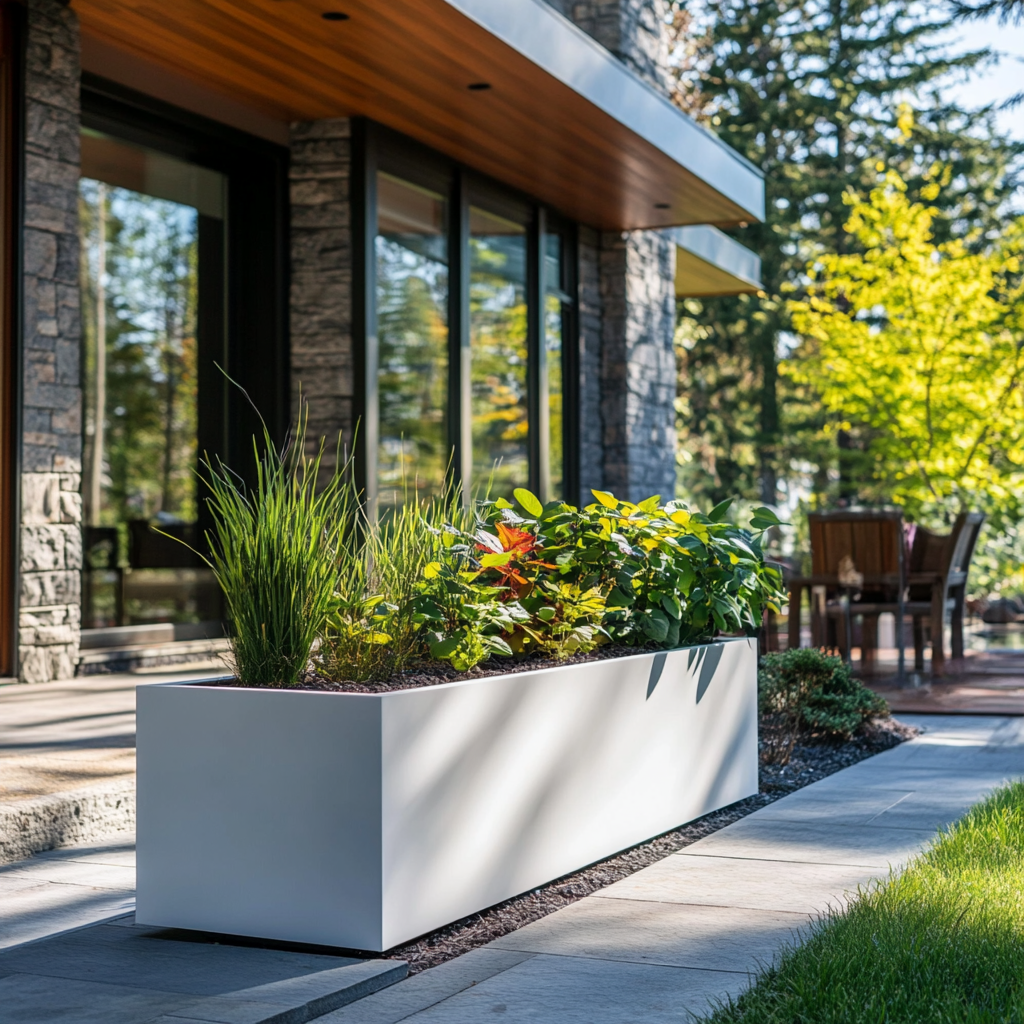
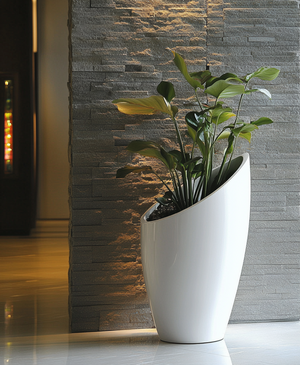
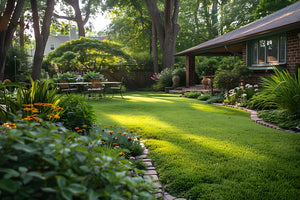
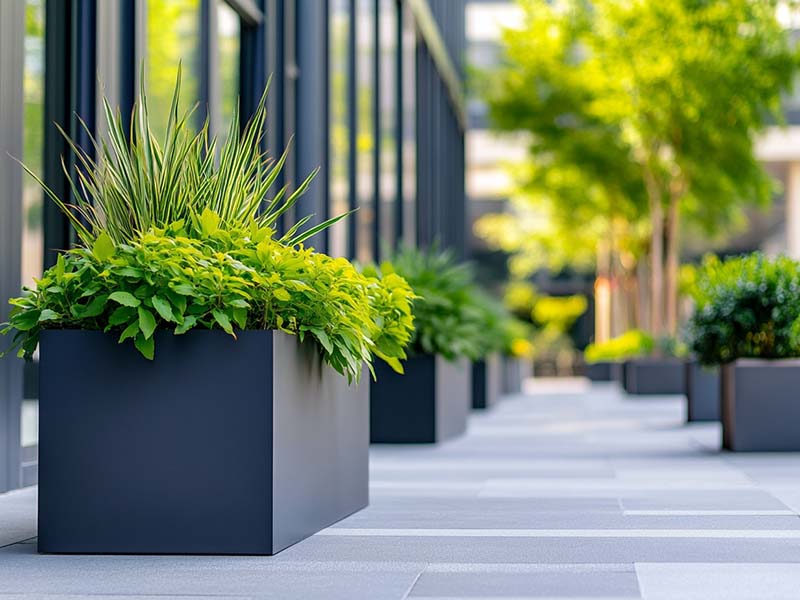
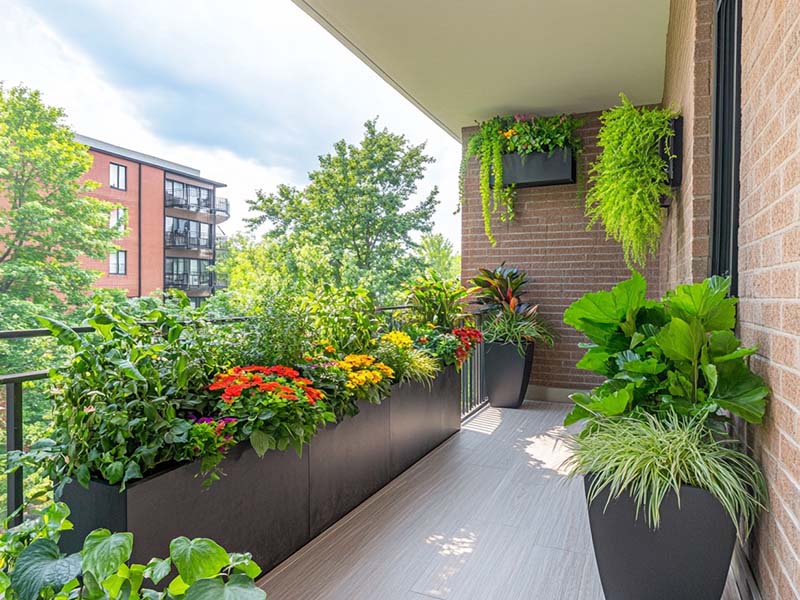
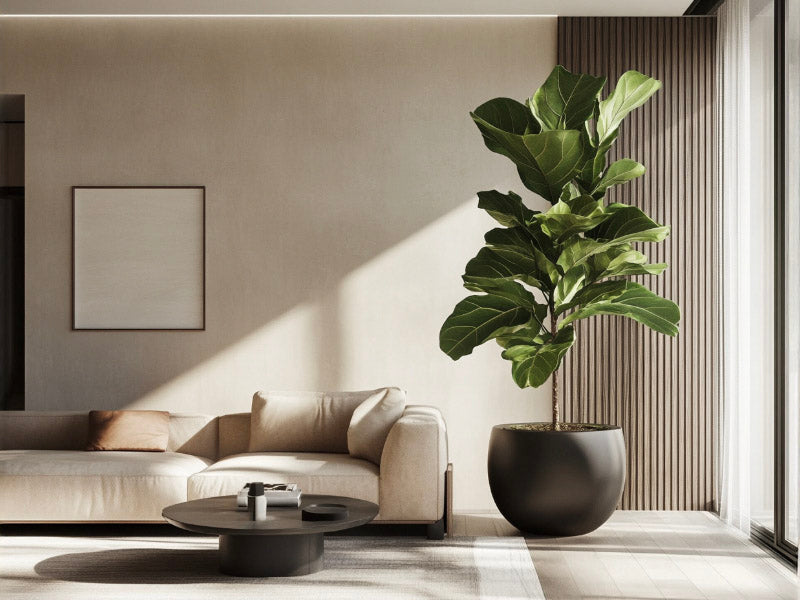














Tony —
how to keep the plants from drying out too fast? I live in a pretty hot area, and I’m worried the planters will need constant watering